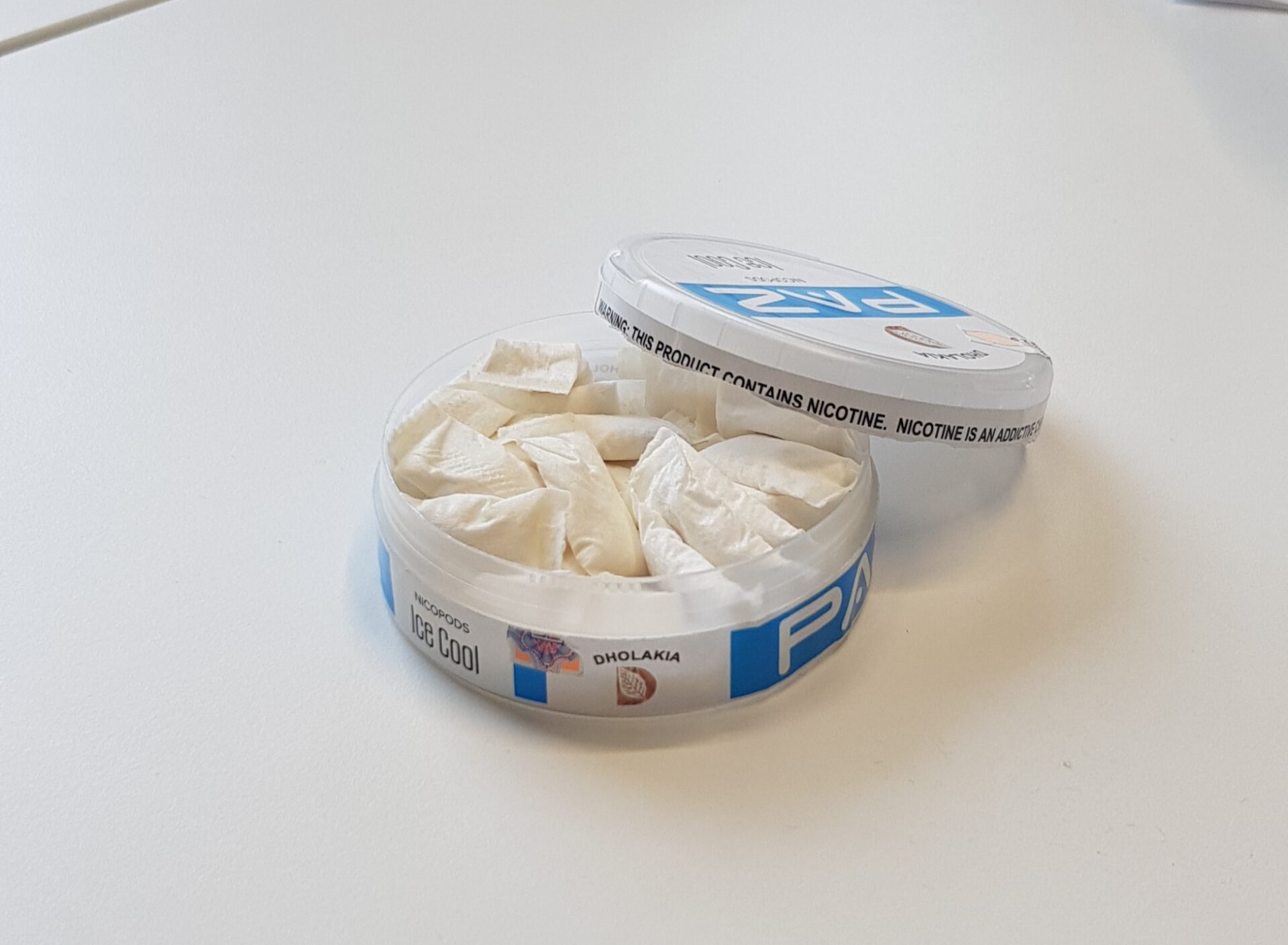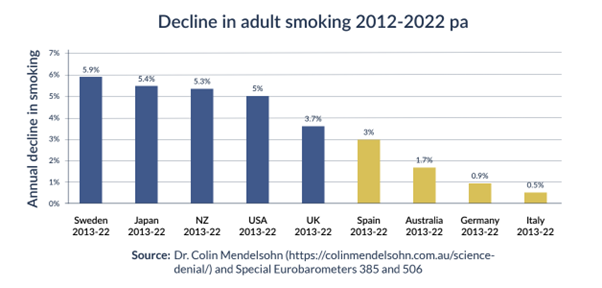The smoking rate in the EU is at 25% and more than 700,000 people die yearly from smoking. Most member states will fall miles short of the EU target of a smoking rate of under 5% by 2040 if politics continues as before.
However, a look at Sweden shows that there is another way and the ambitious goal of a smoke-free society is achievable. In Sweden, the smoking rate was 5.6% in 2022 and is expected to fall below the 5% mark this year. Thus, according to the EU definition, Sweden reached the EU target 17 years earlier than targeted and will be smoke-free this year. What makes Sweden different?
The answer is: science-based health policy. Sweden has embraced the concept of tobacco harm reduction and supports the switch from cigarettes to less harmful alternatives such as vaping, nicotine pouches, and snus. As a result, the smoking rate in Sweden has been reduced more than two times faster than in Spain, six times faster than in Germany, and almost twelve times more quickly than in Italy.
The Swedish experience proves that being open to new nicotine products and encouraging smokers to switch to these less harmful alternatives effectively reduces smoking rates and, consequently, smoking-related diseases.
Sweden is the only country in Europe where snus, an oral smokeless tobacco product which is significantly less harmful than cigarettes, is legal. The availability of snus has enabled hundreds of thousands of smokers to switch to this reduced-risk product and quit smoking. In addition, Sweden introduced consumer-friendly regulations for vaping and nicotine pouches, leading to an accelerated reduction in smoking rates. By switching to these alternative products - with overall nicotine consumption similar to other EU countries - smoking-related deaths are 22% lower than the EU average.
In Sweden, vaping, pouches, and snus are legal to use and sell, various flavours are also available, and all of these products are taxed at lower rates than traditional cigarettes. Countries that follow the Swedish model are more successful in tackling smoking than countries that ban and tax alternatives.
Unfortunately, the EU decided against the successful Swedish way. The discussion concerns higher taxation, flavour bans, and outdoor vaping bans. What we need is the opposite. The EU must apply risk-based regulation for nicotine products. Less harmful alternatives must not be treated like cigarettes to incentivise more smokers to switch.
More than 700,000 deaths yearly should be reason enough for politicians and public health to jump over their shadows and admit past mistakes: it's high time to finally take the Swedish path.
Opinion piece by Michael Landl, Director of the World Vapers’ Alliance
Michael is from Austria and is based in Vienna. He is an experienced policy professional, passionate vaper and he studied at the University of St. Gallen. He has worked for several public policy outlets and the German Parliament.



